KATHMANDU: The restoration of the historic Ranipokhari pond in Kathmandu nears completion.
According to authorities, 97 percent of the reconstruction work of Ranipokhari is complete now. The reconstruction and renovation of the historical pond had started on February 4, 2019, and is in the final phase of completion.
As if waiting impatiently, the rainwater has covered the newly constructed bottom of the pond, and with this, the process of collecting the water in the pond has started as well.
According to the National Reconstruction Authority (NRA), the 5 feet 2 inches deep pond has a capacity of storing 30 million water.
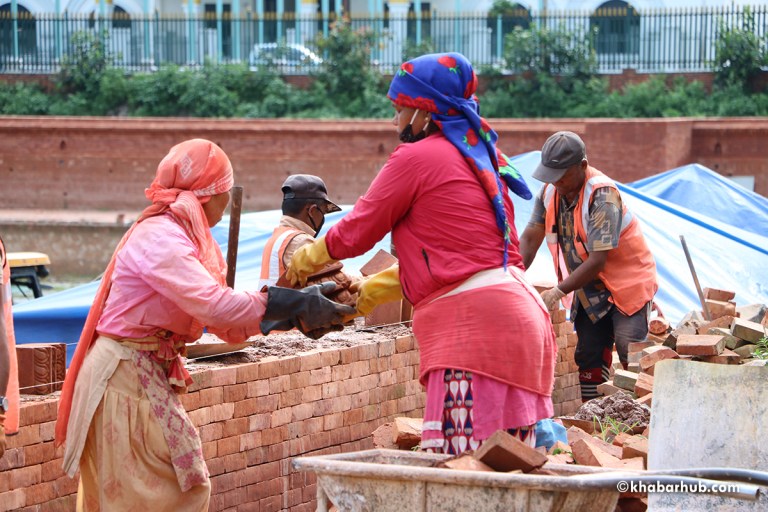
Heritage expert in the Authority, Raju Man Maharjan says the pond will be replenished in five different methods.
He told Khabarhub that two borings each 260 meters deep has been dug to supply water to the pond. Another plan is to supply water to the pond from the wells in Tundikhel, opposite to Bir Hospital.
In addition to those two sources, there will be a dedicated line of Melamchi Drinking Water. Besides, the Authority is trying to open two water lines coming from Durbar High School.
Formation of Consumers Committee in the final phase
The historic Rani Pokhari, which was damaged by the devastating earthquake of 2015, got the reconstruction touch since March 4, 2019. The restoration of the pond attempt was initiated in March 2019 through the formation of the Consumers Committee.
The committee first got the pond cleaned up with the help of 60 women workers from Bhaktapur.
The task that started with mowing the grass and burning it got sped up gradually. Yet, not to miss the deadline, the NRA decided to use dozer last October.
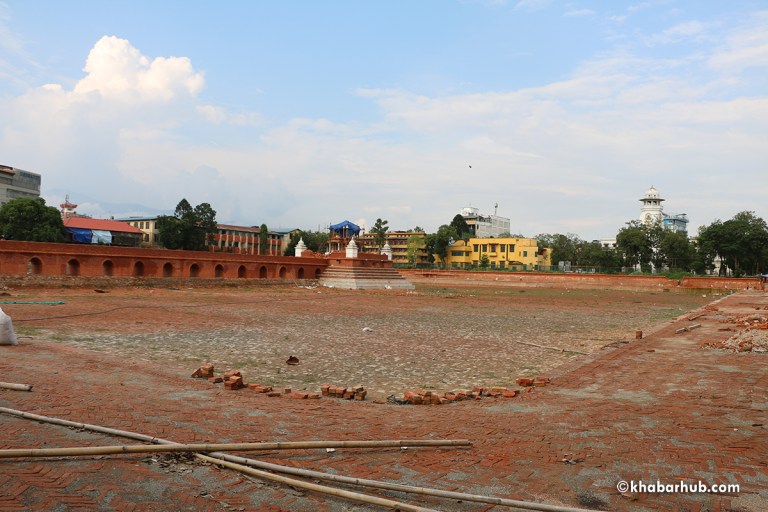
Heritage expert Maharjan confessed that despite knowing the fact that big devices were not allowed for the renovation and reconstruction of heritages, the Authority continued to use dozers to minimize the expense as well as to save the time.
“Had we continued with the human labors and not gone for the use of dozers, it would have taken 7-8 years more,” Maharjan told Khabarhub. “With the use of dozers, we have been able to restore the pond in its original form in such a short time.”
Once the Authority decided to use the dozers in the ground, the workers focused on the reconstruction of the walls of the pond.
“Only 3% of the task assigned to the committee is still incomplete,” he updated about the progress so far and added, “The continuous rainfall has disrupted the work to some extent, yet we can overcome it soon, as we are using the pump to drain the water.”
The story of the 16-month long reconstruction
President Bidya Devi Bhandari had inaugurated the reconstruction of Ranipokhari in January 2015.
Although it was told that the reconstruction would get priority, it took more than three years for the real initiation of the site. The clash between Kathmandu Metropolitan City and the Department of Cultural Heritage hampered the restoration work.
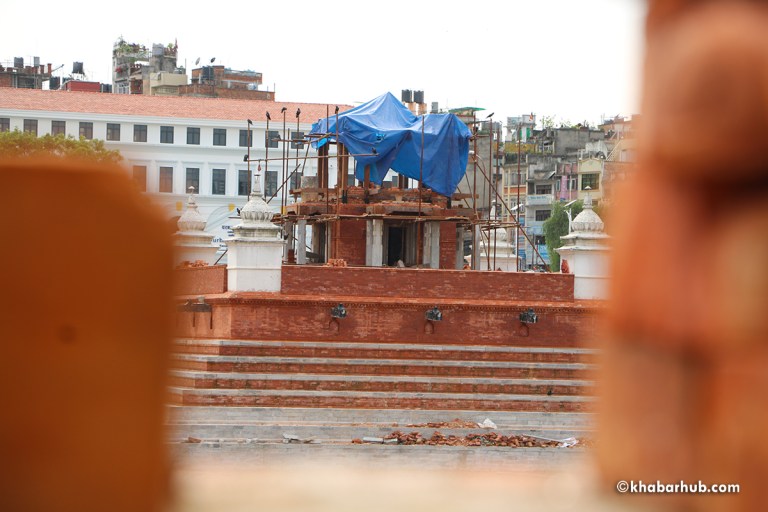
The government had entrusted the NRA with the responsibility of restoring the sites, including Ranipokhari and Balgopaleswor temple in their previous style.
The NRA then signed a contract with Tulasi Construction JV for the reconstruction. The construction of the temple is going on but the bridge to the temple is already completed.
Maharjan claimed that the temple would be ready for this year’s Bhai Tika (Tihar) festival. Although the Authority had formerly pledged to complete it by the previous Bhai Tika, the reconstruction got prolonged due to various reasons.
“We then intensified the work to finish it by the end of January, and we could complete it too, but the lack of enough black cotton soil required to place all over the pond affected the work,” he said.
Now the walls and the floor of the pond are plastered with black cotton soil. The soil and bricks brought from various parts of the Valley are stuck to the floor and walls to let the water stored longer.
COVID-19 impact: No. of workers declined
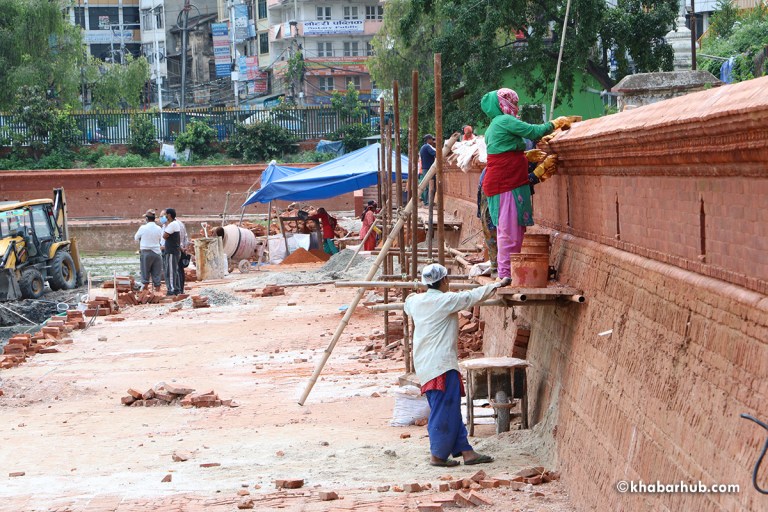
Abiding by the security measures set by the government, the NRA has continued the work despite the lockdown. However, it has experienced a pandemic impact as the number of workers has declined after lockdown.
Maharjan said although the work is going on, the decline in the number of workers in noticeable. “There used to be 90 people working daily before lockdown, now there are around 27 only,” he said. “The pandemic affected the reconstruction activities as well.”


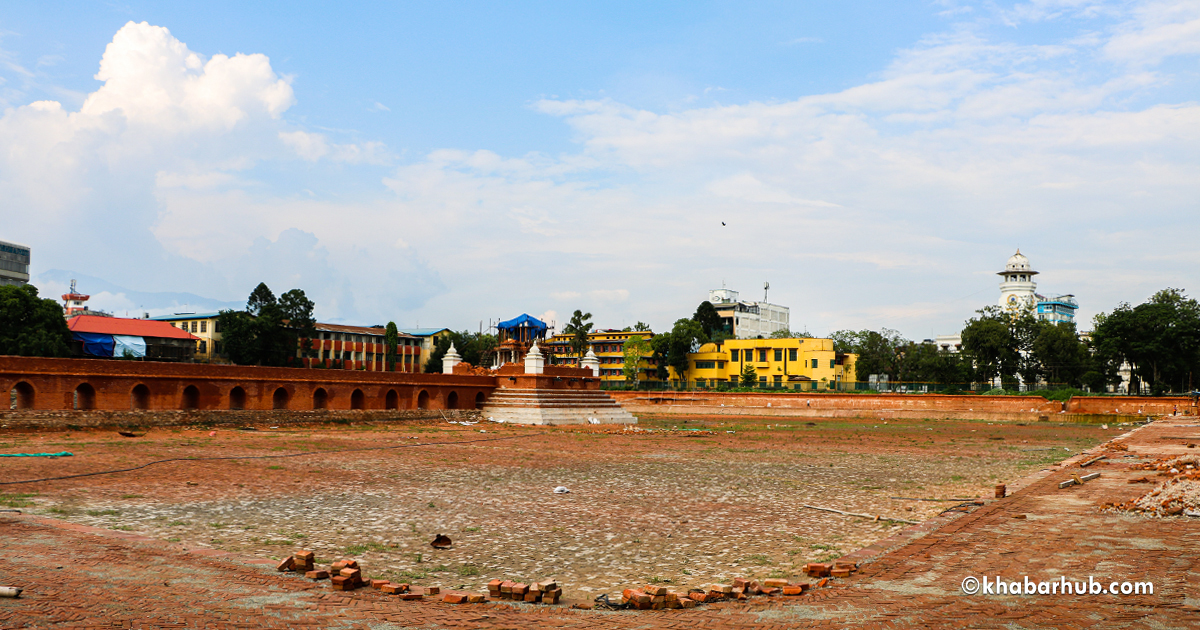






Comment